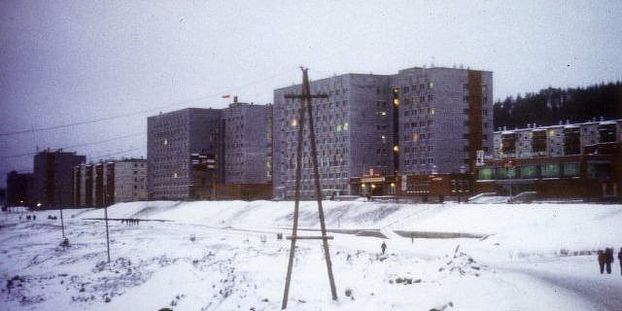Projective Geographies Between East and West

Kenny Cupers, Igor Demchenko
in: Ákos Moravánsky et. al. East West Central: Re-building Europe, 1950-1990, 2017
In his 1947 book U.R.S.S.: Haute Asie, Iran, the French geographer Pierre George surveyed Soviet mass housing construction and regional planning with admiration. George was certainly not the only leftist academic in France at this time who looked east in search of solutions to French problems. One particularly acute challenge was housing. France had come out of the Second World War with an extreme housing shortage, and the chaotic suburbanization of the interwar decades – in the form of small allotments of often selfbuilt cottages without infrastructure or public services – was the antithesis of the orderly industrial and housing schemes that George had witnessed being built in the Soviet Union during his visits in the early 1930s.
With its gargantuan projects of heavy industrialization and its pervasive planning apparatus, the Soviet Union seems to have been engaged in an exceptional experiment, testing whether the geography of the union’s vast landmass could be remade in the image of a well-oiled production machine. Here, the discipline of geography was no longer just the description of natural features or human activities on the surface of the earth; it actively contributed to comprehensive planning at a new regional and even continental scale. Nevertheless, such projective geography – a design approach as opposed to descriptive science – was developed not only in the Soviet Union. From the 1940s to the 1970s, planners, architects, and a range of new kinds of experts in the so-called First World as well as the Second World expanded their ambitions from designing housing, neighborhoods, and cities to reshaping the national geography at large. This explicitly geographic register of design, in which nature was first and foremost a resource to exploit, can be considered a paradigmatic product of the Cold War world order: a consequence of the global proliferation and institutionalization of modernism and a tool of economic development and international competition.
French planning experts, even if they were not able to put territorial design fully into practice, articulated this geographic register most explicitly, using the term géographie volontaire. According to the geographer Jean Labasse, géographie volontaire was a scientific approach born out of the growing realization, from the 1930s onward, that the “geography of laissez-faire capitalism had failed.” The ultimate goal of géographie volontaire then was to organize private enterprise geographically, through the “controlled evolution of landscapes.” But where did French geographers stand in relation to their Soviet colleagues who restructured territory for the state-run economy? How was projective geography – as theory and as practice – shaped by the intertwined political realities of East and West? And what did the massive projects of territorial design do to the architectural expertise essential for turning the chimera of development into facts on the ground under both democratic and authoritarian regimes?
Image: Ust Ilimsk in the evening, 1977–1978 © Günter Mosler
